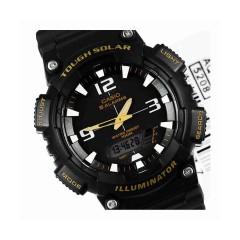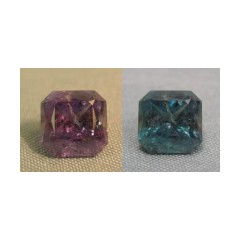The Alexandrite Stone, also known as the Alexander Stone, is one of the rarest natural colored gemstones discovered so far. It is distinguished by the beauty of sapphires , precious stones and other precious stones that may sometimes outweigh its beauty and value. Because it earns a unique look and a distinctive, unusual look. From the perspective of gemology The colors of the Alexandrite stone are the color variants of the chrysoberyl element, also known as cycosilicate. Which, despite its name "Chrysopril", which refers to the beryllium aluminate, it actually does not belong to the famous pyril group. But instead it is classified as a self-contained metal group.
But why is this stone called Alexandrite called and what is the relation of this stone to Alexander? Well, to answer this question we will inevitably have to dig deeper into the history of this stone, let us go back to the history of discovery first, which is credited to one of the French workers in the field of minerals and the extraction of gems called Nils Gustaf Nordenskiöld (born in 1866 and died in 1792), in 1834 Gustav discovered a stone similar to the emerald, but with different characteristics from an emerald mine located in the Ural Mountains of Russia near the Tokovaya River. This stone caused the scientists to be examined later and classified as one of the types of chrysopril color variants that were affected by chromium.
Thus, the interpretation of the launch of the so-called stone to the legend says that the stone was discovered Alexandrite on the same day that the next Russian Caesar "Alexander II" the right age to take power, since that moment was considered the stone of the Alexandrite is the stone of the tsars and Russian nobles in addition to It was later regarded as a gem symbolizing the whole Russian empire.
The Alexandrite Stone is characterized by an amazing characteristic referred to as the phenomenon of color change, also known as the "Alexandrite effect", which can be observed under the availability of certain lighting conditions, usually the variables of daylight and incandescent lighting. But what exactly is color changing? and what do you mean? The effect of the Alexandrite occurs in light of the change of light intensity and the angle of its fall on the Alexandrite stone and the angle of its vision and its appearance to appear in different colors whenever the circumstances change. These colors are limited to green, red, orange and yellow. The Alexandrite stone is usually emerald green in broad daylight, while red raspberry appears under incandescent light. It can also appear yellowish and pink. It is noteworthy that there are types of Alexandrite may appear with the effects of the eye (cat's eye) when they are cut and formed specifically (non-polished). The phenomenon of color change produces the "Alexandrite effect" due to the intense absorption of light in the blue and yellow parts of the color spectrum.
Examination and identification of the Alexandrite stone
Most of the chrysopril stones acquire their color from the presence of the element of iron, but the reason behind the acquisition of the Alexandrite stone of its colors is the presence of traces of the element of chromium. Thus, through analysis and spectroscopy, Alexandrite stones can be easily distinguished from other similar stones. Common types of chrysopril may sometimes have traces of chromium, but they are not classified as Alexandrite stone as long as they do not have the color change characteristic.
Sources and places of extraction of the Alexandrite Stone
The main source of the Alexandrite stones was from an area in the Ural Mountains of Russia, which contained a number of mines that had been extracted from them as a result of the intensity of the work that had been exhausted for a long time. It was believed for some time that the mines from the Ural Mountains were the only source of relatively large-scale Alexandrite stones, specifically specimens weighing 5 carats or more, but recently in 1987 large specimens extracted from Minas Giraeus in Brazil. Later, Alexandrite stones were discovered and extracted in other regions and countries including Myanmar (Burma), Sri Lanka, Tanzania, India (Andhra Pradesh) and Madagascar.
Colors
On the side of the color change feature in the Alexandrite stone, there are several natural types, each of which has attractive and wonderful colors that distinguish it and acquire it through the different nature of the impurities in it.For example, the green Alexandrite stone acquires its color due to the presence of impurities from the chromium element in its composition. Thus, there are other types of Alexandrite stones, including those extracted from mines located in the state of Sri Lanka, specifically in Ceylon, which is characterized by changing colors of khaki to brown color due to the impurities of different elements in the composition. While another type of stone has its origins in Zimbabwe, with few variations in color, usually darker in color than purple. In addition, the Alexandrite stones that are extracted from Tanzania tend to be lighter in color while the color change is medium and good. While the Alexandrite stones, which are extracted from Brazil, are famous for being very dark, with variations in color ranging from blue to violet. It is noted that the preferred and desirable Alexandrite stones are characterized by pure and clear color grades as well as the strength of the property of color change in them.
Cutting
The degree of clarity of the rough stone of the Alexandrite varies from transparent to dark before it is cut, while Alexandrite stones usually look pure and serene immediately after cutting and polishing, as well as with glossy glass.Sri Lanka is known for its production of the finest Alexandrite stones, which are often free from visible impurities. Good quality Alexandrite stones may sometimes exceed the value of sapphires, emeralds and red sapphires , especially stones larger than 1 carat. As for the size, it is rare to find the stones of the Alexandrite in large sizes and the stones weighing more than three carats very rare.





